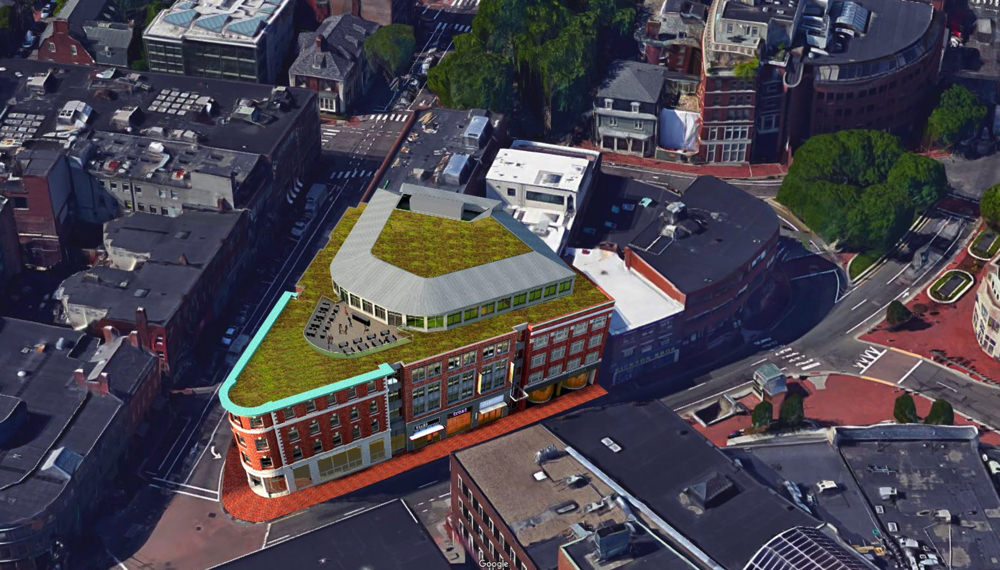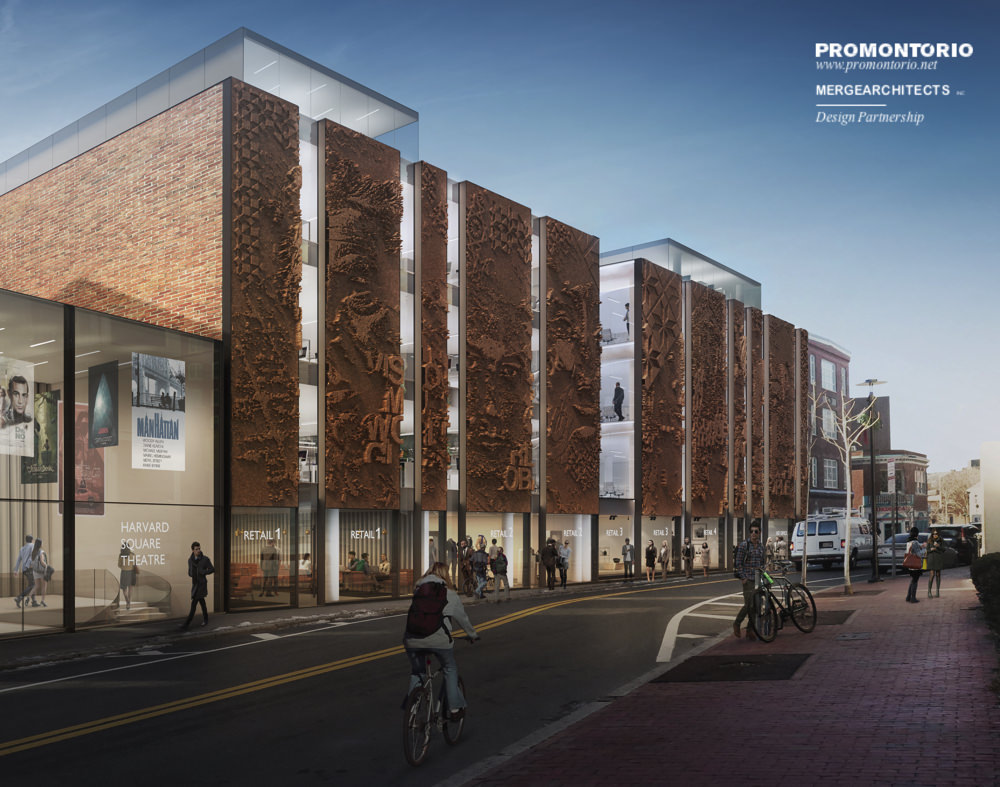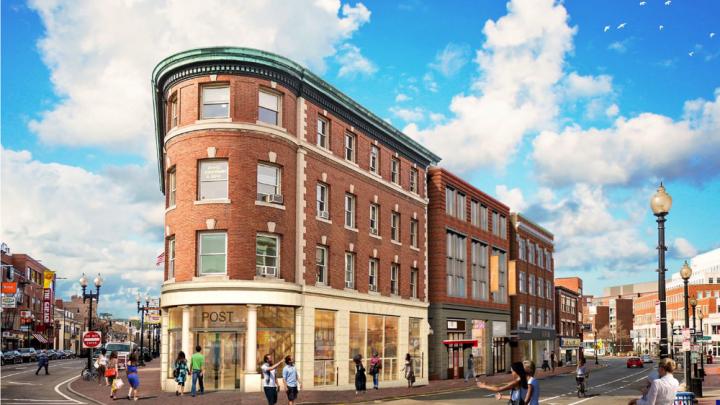SIX YEARS AGO, this magazine ran an article reflecting on the many changes Harvard Square had undergone in the past 25 years: the losses of The Tasty Sandwich Shop and the Wursthaus, as well as the significant decline in independently run bookstores with the closing of the Globe Corner Bookstore and Curious George Books and Toys. The latter closed in 2011 and reopened a year later as “The World’s Only Curious George Store,” and is now once again threatened. So far this year, the Square has bid farewell to locally owned businesses like Schoenhof’s Foreign Books, and Café Algiers. In April, the Square’s Crimson Corner newsstand was forced to move from its prime location at the intersection of JFK Street, Mass. Ave., and Brattle Street down to Brattle Plaza. Its old location remains empty months later, and D.C.-based chain, &pizza, has been trying to take over the space.
Harvard Square’s businesses reflect consumers’ and developers’ changing interests; one of the best examples of this changing tide was The Tasty’s replacement by an Abercrombie & Fitch in the fall of 1999, the heyday for the teen-centric retailer. A&F moved out of the space just five years later. Currently, the amount of construction being proposed along Brattle Street, JFK Street, Mass. Ave., and Church Street has the potential to drastically alter the face of the Square. The map below is a representation of Harvard Square in its current form; purple and orange pins indicate potential construction sites, and green pins identify buildings that have seen multiple turnovers in the past century (including the Harvard Square Theater).
Click the top right corner to expand the map: Purple and orange pins indicate potential construction sites, and green pins identify buildings that have seen multiple turnovers in the past century (including the Harvard Square Theater).
Purple Pins: Potential Sales on Brattle Street
Buildings marked by purple pins are part of a recently reported potential sale of storefronts, worth an estimated $95 million, by the Dow and Stearns Family Trust. The holdings 1-8 and 17-41A Brattle Street, stretching from Black Ink through The Tannery, are two of the five buildings in Harvard Square owned by the trust (the other three are the flatiron Abbott Building, the Corcoran Building, and 18 Brattle Street, now part of demolition and renovation plans for a proposed mall). The sale of the two Brattle Street properties would mean that 102 year-old Brattle Square florist, and Cardullo’s, which has been in Harvard Square for more than 60 years, would likely be pushed out by higher rents, or even demolished. “They [the trust] have been terrific community partners and terrific landowners…Our hope is that the new owners will also be good stewards of these historic buildings,” said Denise Jillson, director of the Harvard Square Business Association. It’s still unknown who those new stewards might be, but Charles Sullivan, executive director of the Cambridge Historical Commission, believes upward pressure on rents will play a key role in dictating which stores fill the spaces. Rachael Solem, president of Cambridge Local First, an organization that promotes local business ownership across Cambridge, echoed Jillson’s sentiments: “Harvard Square has been thriving for hundreds of years with a wide variety of locally owned businesses. They are the heart of what makes it such a great international destination. We hope those who are buying and re-developing real estate in this area understand the value of us, the stakeholders, with roots in this community.”
Originally, 17-41A Brattle was meant to serve as a neighborhood shopping mall, to attract visitors from as far as Arlington, while also serving the local community. Sullivan says that around 1930, the Dow family assembled florists, shoe stores, and women’s clothing stores so that Harvard Square would become a one-stop-shop for families doing their weekend shopping; the Dows also built a small department store in the Square, which occupied a building that has since been torn down. While 1-8 Brattle is “fairly built out, from a zoning perspective,” Sullivan says, meaning that it can’t expand further under current zoning laws, 17-41A is approved by the City of Cambridge for an 80-foot height limit—opening up potential for significant retail or office expansion in that space. “I would say that 17-41A is the one to watch,” he adds.

Proposed rooftop terrace above "The Collection at Harvard Square"
Courtesy of the Cambridge Historical Commission
Orange Pins: “The Collection at Harvard Square”
Buildings marked with orange pins are part of a construction plan called “The Collection at Harvard Square”: a pedestrian mall in the heart of Harvard Square. The initial application proposed a “two-story addition at 9-11 JFK Street, a two-story addition at 18-20 Brattle Street, and a rooftop pavilion covering all three structures.” Later, it became clear that the plan would force The World’s Only Curious George Store out of its current location at 1 JFK Street, and replace part of that building with an elevator. The Corcoran Building, which currently houses Urban Outfitters, would be demolished entirely; the building was constructed in 1948 by Richard Shaw, A.B. 1912. Sullivan raised concerns about the need to preserve the “architectural history of the building” in a public meeting held last December regarding the demolition—particularly because Shaw, with four Harleston Parker Medals under his belt, was a celebrated architect. Cambridge city councilor Jan Devereux fears that “a change of ownership would likely bring another major redevelopment to the central retail corridor of the Square, with more displacement of longtime retail and office tenants.”

Proposed construction to add multiple stories along Brattle Street for "The Collection at Harvard Square"
Courtesy of the Cambridge Historical Commission
Despite those concerns, the Cambridge Historical Commission last month certified that neither the demolition of the Corcoran Building, nor the renovation of the Abbott Building (home of the Curious George store), were “incongruous to the historic aspects or architectural character of the building or district.” This March, Equity One, the New York-based investment firm behind the initial project, was absorbed by Regency Centers Corporation, a real-estate investment trust based in Jacksonville, Florida. A spokesperson for Regency Centers was unable to provide specifics about the current status of the project or how this construction might affect the Square’s identity, but wrote in an email, “We are still evaluating our future for the property, and we are looking forward to bringing this vision to the surrounding community when we are able.”

The retail, office, and cinema spaces that would potentially replace the Harvard Theater space
Rendering by Promontorio and Merge Architects
The Harvard Theater Saga
For the past five years, the Harvard Square Theater on Church Street has remained abandoned, causing many Cambridge residents to complain about the underutilized space, and the subsequent eyesore of the boarded-up facade. Gerald Chan, the second largest landowner in Harvard Square (after the University itself), purchased the building two years ago, and has shared plans to turn the lot into a joint office and retail space, with cinema space underground.
Sullivan says Chan’s proposal will need to get approval from the historical commission, given the existing theater’s historic significance, as well as several other city boards (which, if the process behind the Collection at Harvard is any indication, means that breaking ground on construction might take a while). Jan Devereux says she is pleased to see the theater element of the space preserved in Chan’s plan, and hopes the new architecture will preserve the brick and massing of the Harvard Square Theater. Although Chan’s development company previously told The Boston Globe that the existing theater structure was “functionally obsolete,” preserving the Square’s past in future construction projects remains important to many Cantabrigians. Whether preservation will be at odds with the goals of new developers, however, will determine the new face of Harvard Square.








